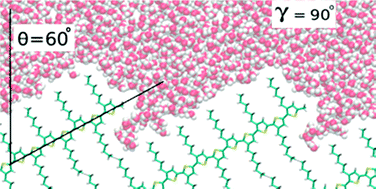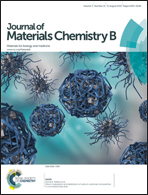The study of polythiophene/water interfaces by sum-frequency generation spectroscopy and molecular dynamics simulations†
Abstract
Semiconducting polymer/water interfaces are gaining increasing attention due to a variety of promising applications in the fields of biology and electrochemistry, such as electrochemically-gated transistors and photodetectors, which have been used for biosensing and neuroscience applications. However, a detailed characterization of the polymer surface in the presence of an aqueous environment is still lacking. In this work, we employed sum-frequency generation vibrational spectroscopy, a surface-specific technique compatible with electrochemical/biological conditions, to demonstrate that the surface of thin films of regio-regular poly-3-hexylthiophene (rr-P3HT) undergoes a molecular reorientation when exposed to aqueous electrolytes, with respect to their surface structure in air. Experimental results are corroborated by molecular dynamics simulations. Since surface molecular orientation is believed to play a fundamental role in electrochemical and environmental stability of conjugated polymers, the reported findings not only contribute to the fundamental understanding of conjugated polymer/water interfaces, but they may also have implications in the design of conjugated polymers for enhancing their performance in electrolytic environments.

- This article is part of the themed collection: Bioelectronics

 Please wait while we load your content...
Please wait while we load your content...